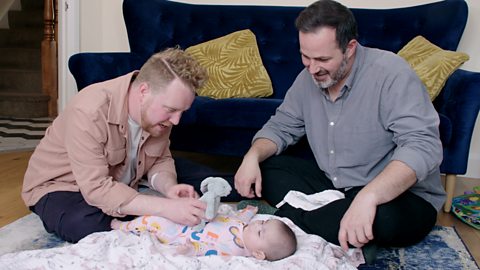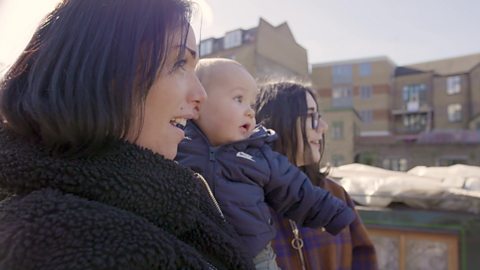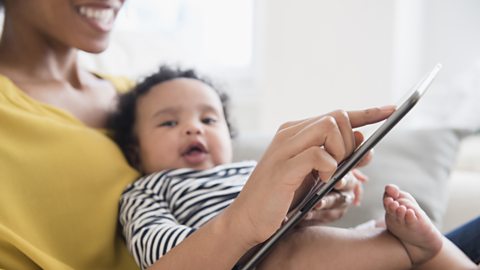
Given the circumstances over the past few years, itãs understandable that fatigue may set in and parents might have allowed their little ones more than the usual amount of screen time. However, concerns are growing in relation to childrenãs mental and physical health.
We spoke to speech and language therapist Janet Cooper about the impact of too much screen time, how we can make a positive of time on devices and the simple steps we can take to pull our families away from the screens.


Impact on development
ãThereãs no hard and fast rule around screen timeã, says Janet. ãYouãve got to use some common sense and see what reaction your child is havingãÎ itãs all about balance.ã
ãYour brain has a built-in ãseeking systemãã explains Janet. ãItãs activated by the people around you. If babies are spoken to one-to-one and people show them interesting things, that develops the seeking system to make them explore and make the most of the world around themã.
This ãseeking systemã is key to our motivation and desire to explore and understand from an early age, and itãs learnt through human interaction. ãWe can depress childrenãs seeking systems with too much screen time and not interacting face-to-faceã
Children also have a 'play system' in their brain. ãYouãre intuitively born to playã, Janet tells us. ãYour primitive brain is already hardwired to play, but again, it needs activating.ã
Interactive play in particular helps to develop this system of the brain. Simple things like a game of peekaboo or tickling activate this part of the brain and canãt be easily substituted for an on-screen activity.

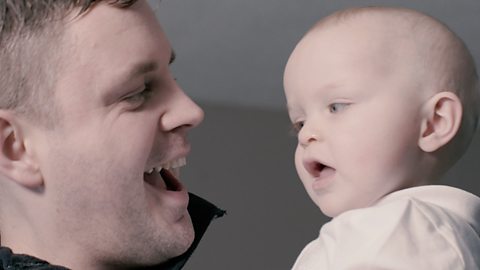
Impact on social skills
The impact of too much screen time on childrenãs social skills depends on what stage of development they are at. As children learn most crucial skills in their first year, this is a key time for them to get as much human interaction as possible.
ãIf young children have not developed social skills already there is a risk if there's less face-to-face timeã, says Janet. ãSo, what babies and young children, really, really need is lots of opportunity to see faces and be talking to somebody face to face.ã
And itãs this physical interaction that helps build the foundations of language. ãWe call it serve and return, where one person speaks, and then the other repliesã, Janet explains. ãIf there's too much screen time introduced too early on, or the adultsã attention is taken away by screens, the babies and young children may be missing out on some of those key interactionsã.
But could these interactions be mimicked through on-screen activities? Not for the youngest children, Janet tells us. ãBabies can't see all the colours at birth, so actually sticking a newborn baby in front of the TV or another screenãÎ theyãre getting very little from that.ã

Thereãs also an effect on slightly older children who may be learning remotely. ãSometimes children are missing out on some of the subtle cues on remote conversationsãÎ it is a risk in terms of children being attuned to other people and picking up those cuesã.
Thankfully, this is something that can be addressed. ãIf your children are having screen time, make sure you're balancing that with face-to-face human time, just a simple conversation, turn that screen off and get down to your child's level and be face to faceã.
What babies and young children really, really need is lots of opportunity to see faces and be talking to somebody face to face.

How can we counteract the rise in screen time?
To maximise the quality of your childãs screen time, try making it a collective experience and think of ways you can add to whatãs going on on-screen. ãIf you're going to watch a programme, watch it together and then talk about it and do some follow up activities, so the screen becomes more meaningful in everyday lifeã, suggests Janet.
And if the tablet, laptop or phone does need to be put away, establish some rules around that. ãChildren learn rules very quickly. They look up to the adult to create the rules and they want you to stick to them, because it makes them feel secure. It's about working out what the rules and boundaries are around screen time in your house.ã
There are ways to get young children involved in setting these rules too. ãMake a box together, where you decorate it and make it really special and that becomes the resting place for the device.ã The box can then be placed out of reach and a boundary about screen time is established.
Creating a visual timetable can also help younger children to understand how their screen time fits into the wider day. For example, an image of a tablet / phone followed by an image of mealtime can help your child to learn that the screen goes away when itãs dinner time.

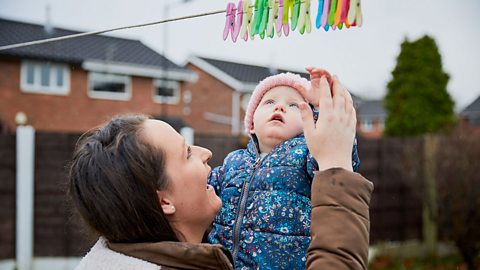
Make the most of being away from a screen
ãI think the easiest thing is making your chores and everyday things you have to do into an interactive experienceã, suggests Janet. ãSo, if you're going to wash up, give your little one a little washing up bowl too and get them alongside you. Talk about the bubbles and the temperature of the water.ã
Itãs a way of getting that valuable interaction with your child without having to make new time and it also gets them moving and gives their eyes a rest from screen glare.
And of course, the value of getting out of the house and into the outside world shouldnãt be taken for granted.
ãGetting outside boosts the serotonin in our brains. Itãs the ãfeel goodã chemical and we can get it from seeing colours in nature like the blue of the sky or the green of grassã.
And getting outdoors doesnãt just help with feeling good, it can also play a role in childrenãs speech and language development.

ãChildren learn so much from connecting what they're seeing, hearing, smelling and tasting, and outdoors you get to see far more things. You get that new vocabulary, but in a multi-sensory wayã.
That multi-sensory experience helps children to understand words better and help connect them to the real world. You can play games around it such as ãI Spyã or a where you tick off different things you have seen on your walk.
Getting outside boosts the serotonin in our brains. Itãs the ãfeel goodã chemical and we can get it from seeing colours in nature like the blue of the sky or the green of grass.
Tiny Happy People activities
As well as the suggestions above, Janet has also handpicked some Tiny Happy People activities that can be done around your home and outdoors.

